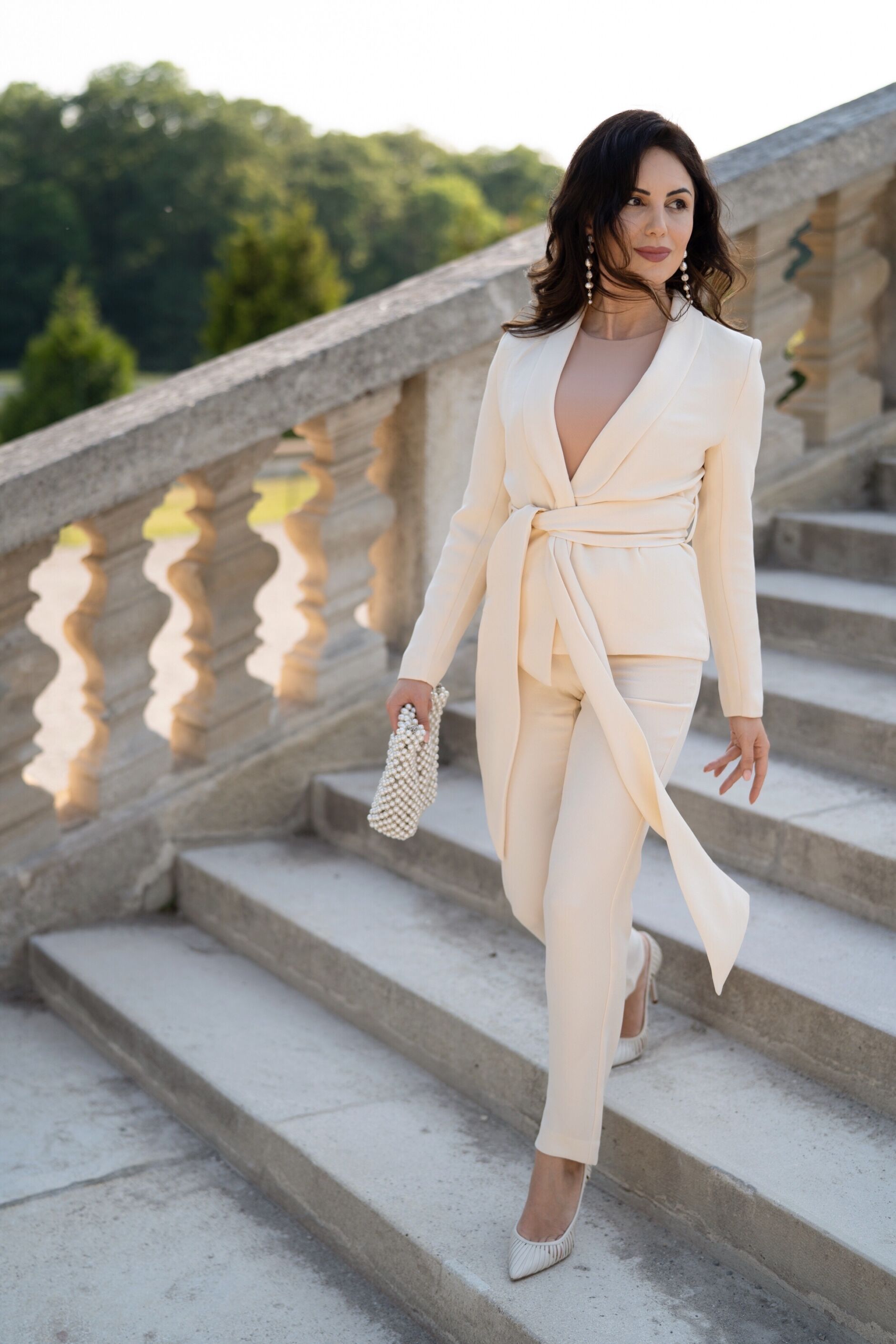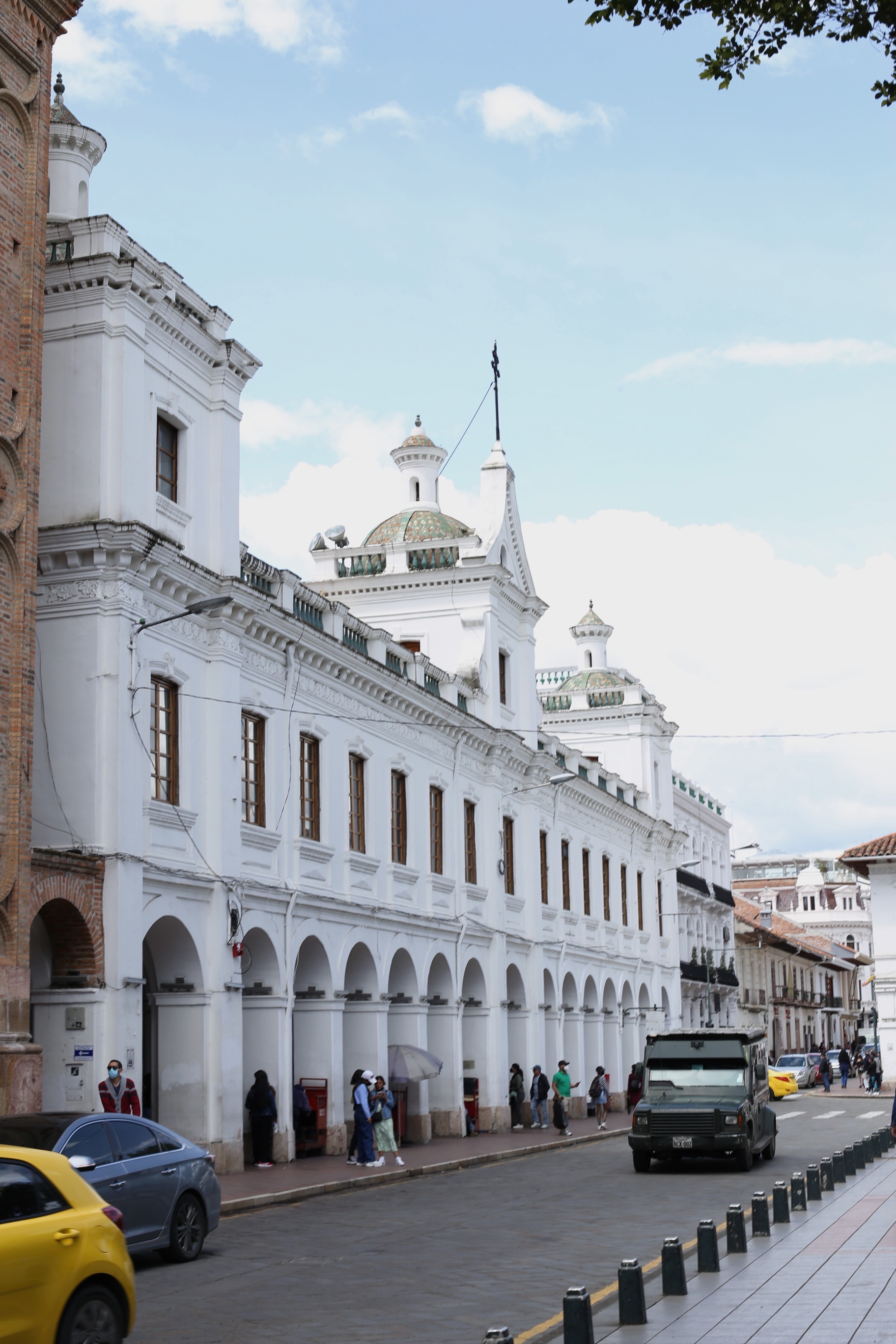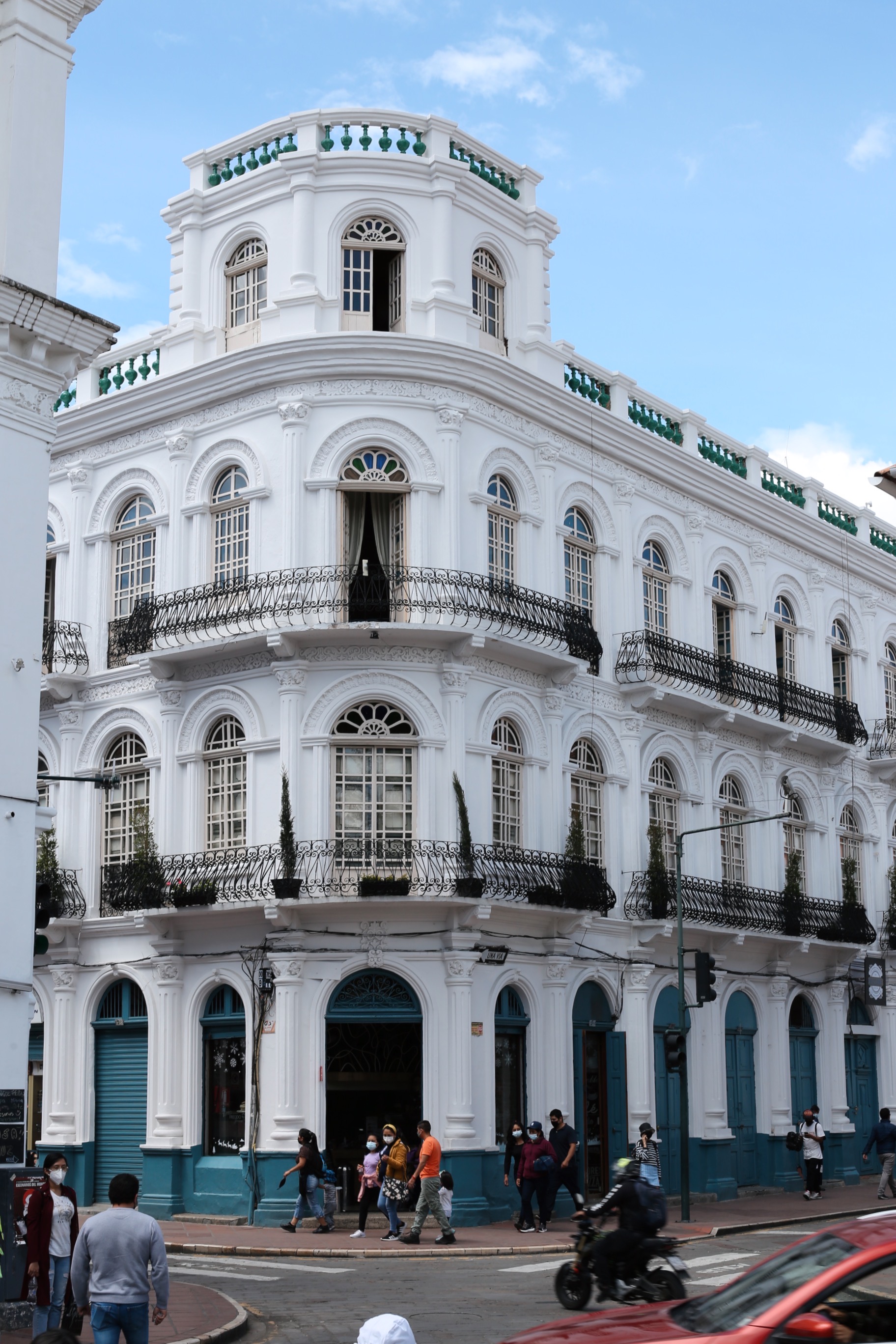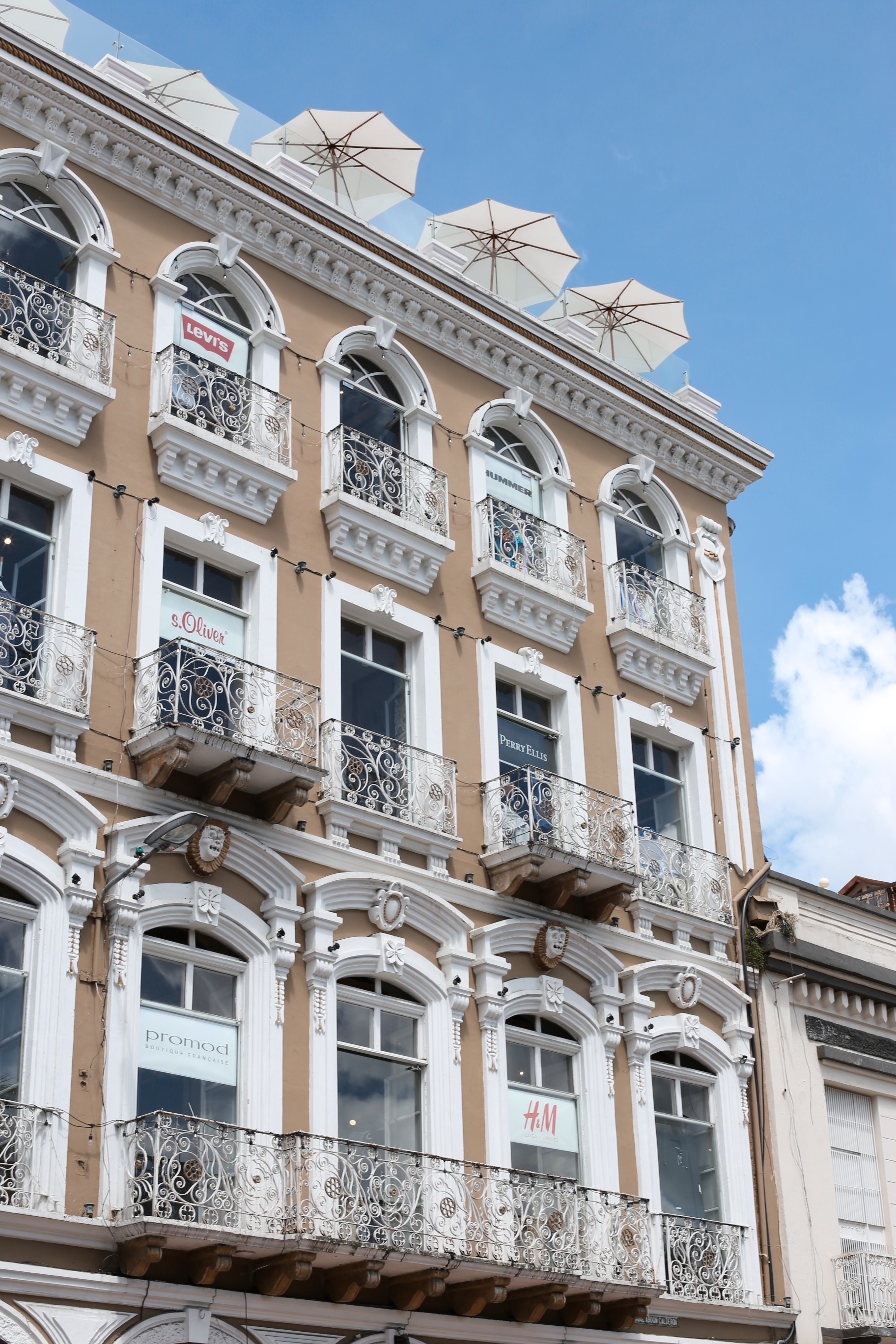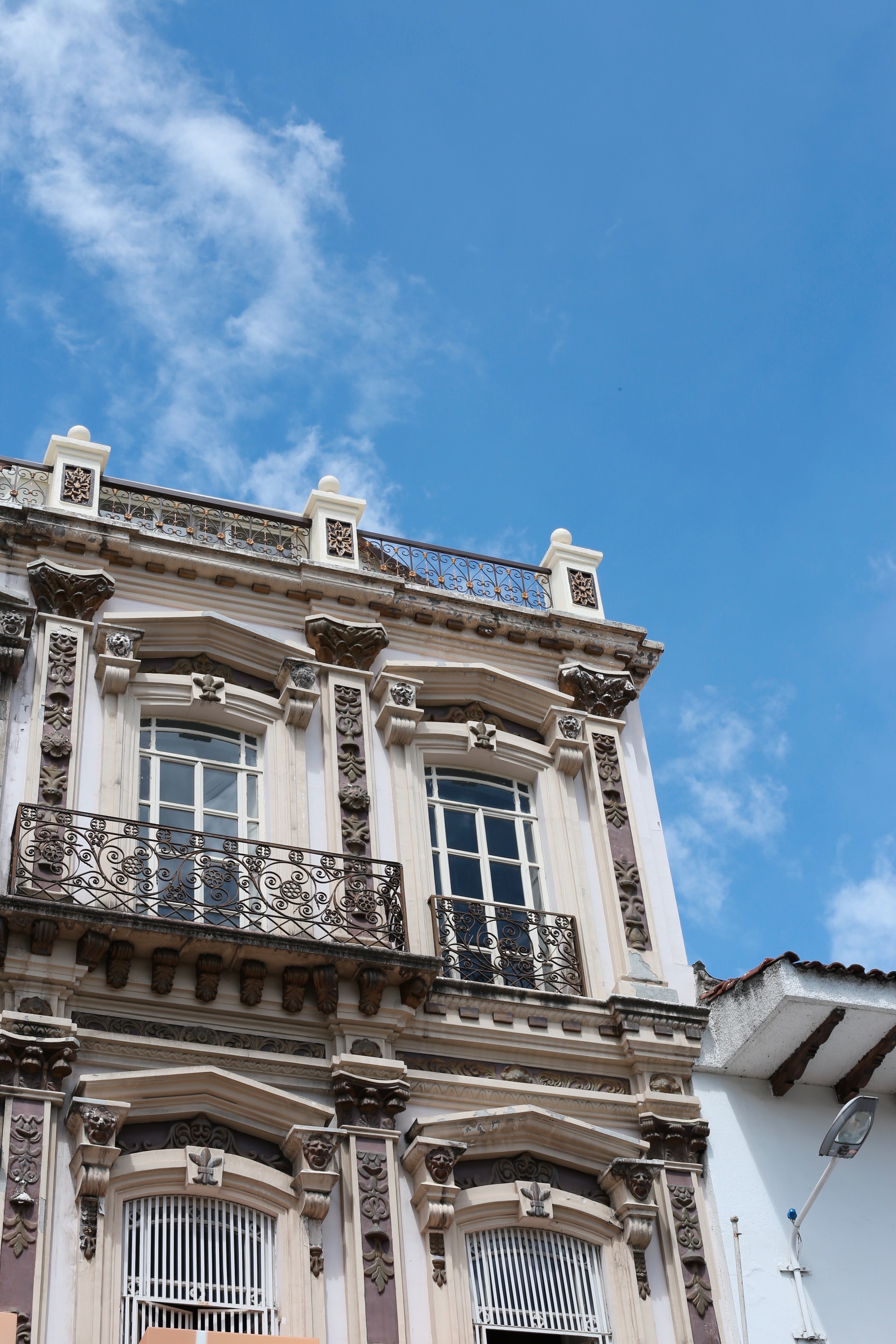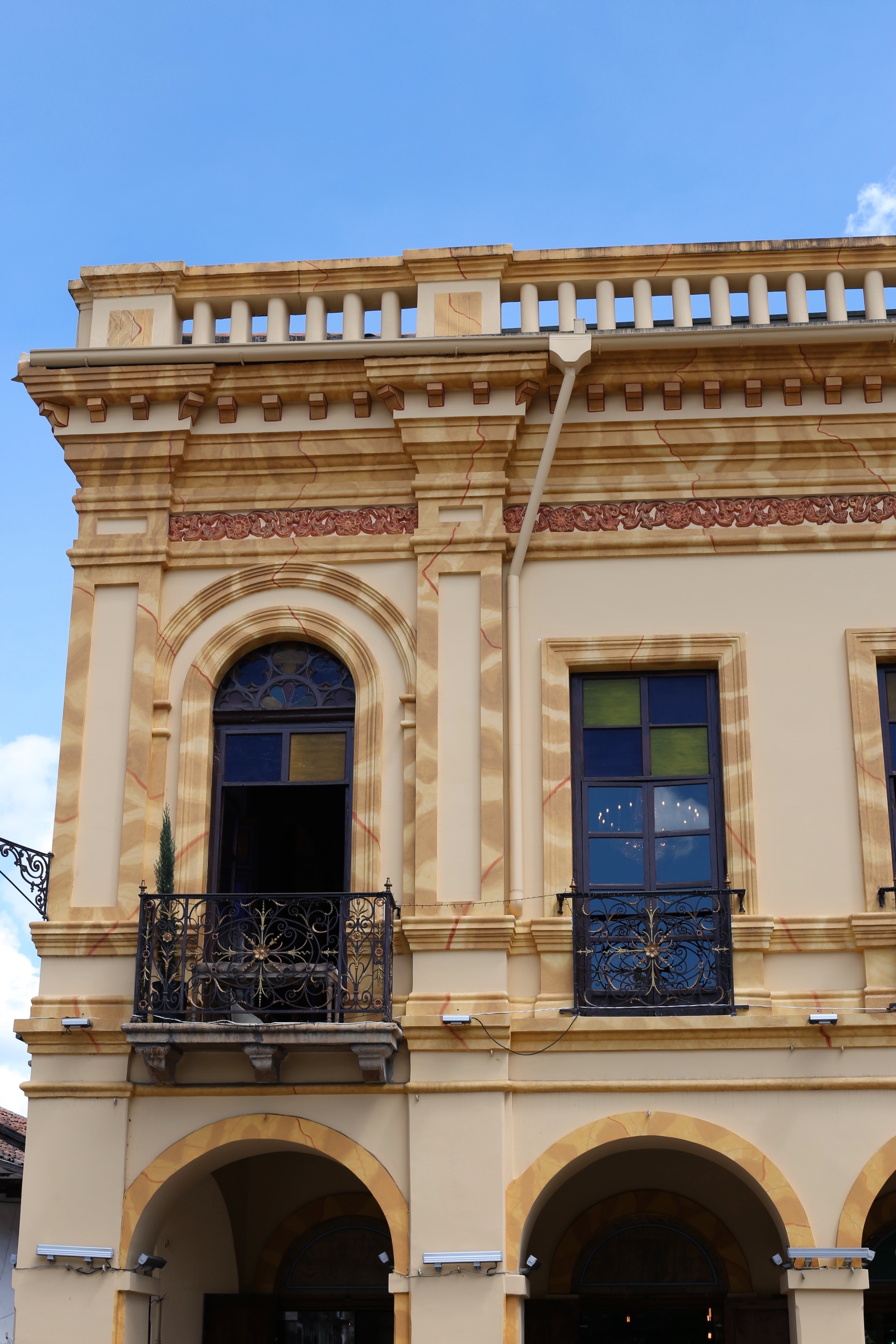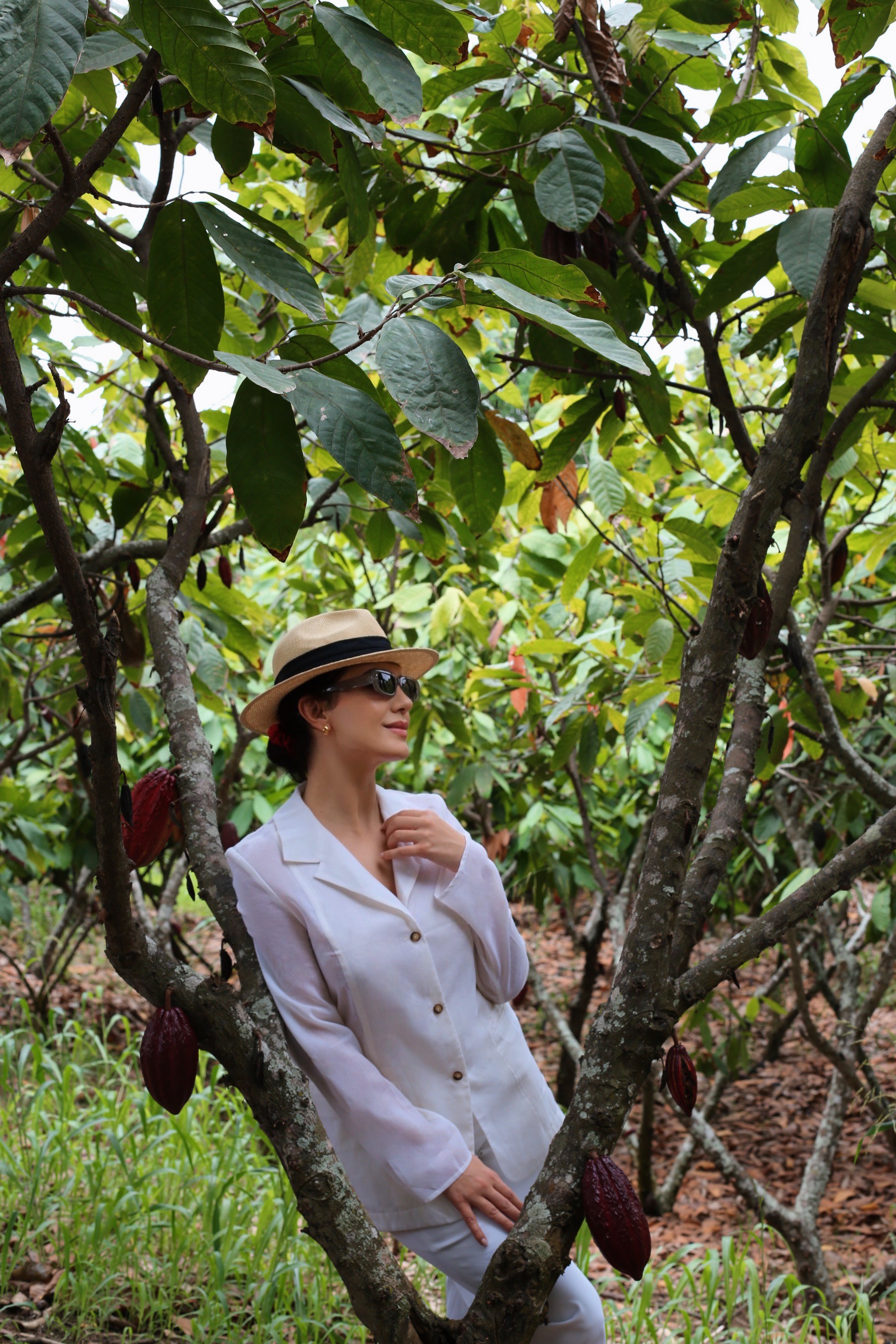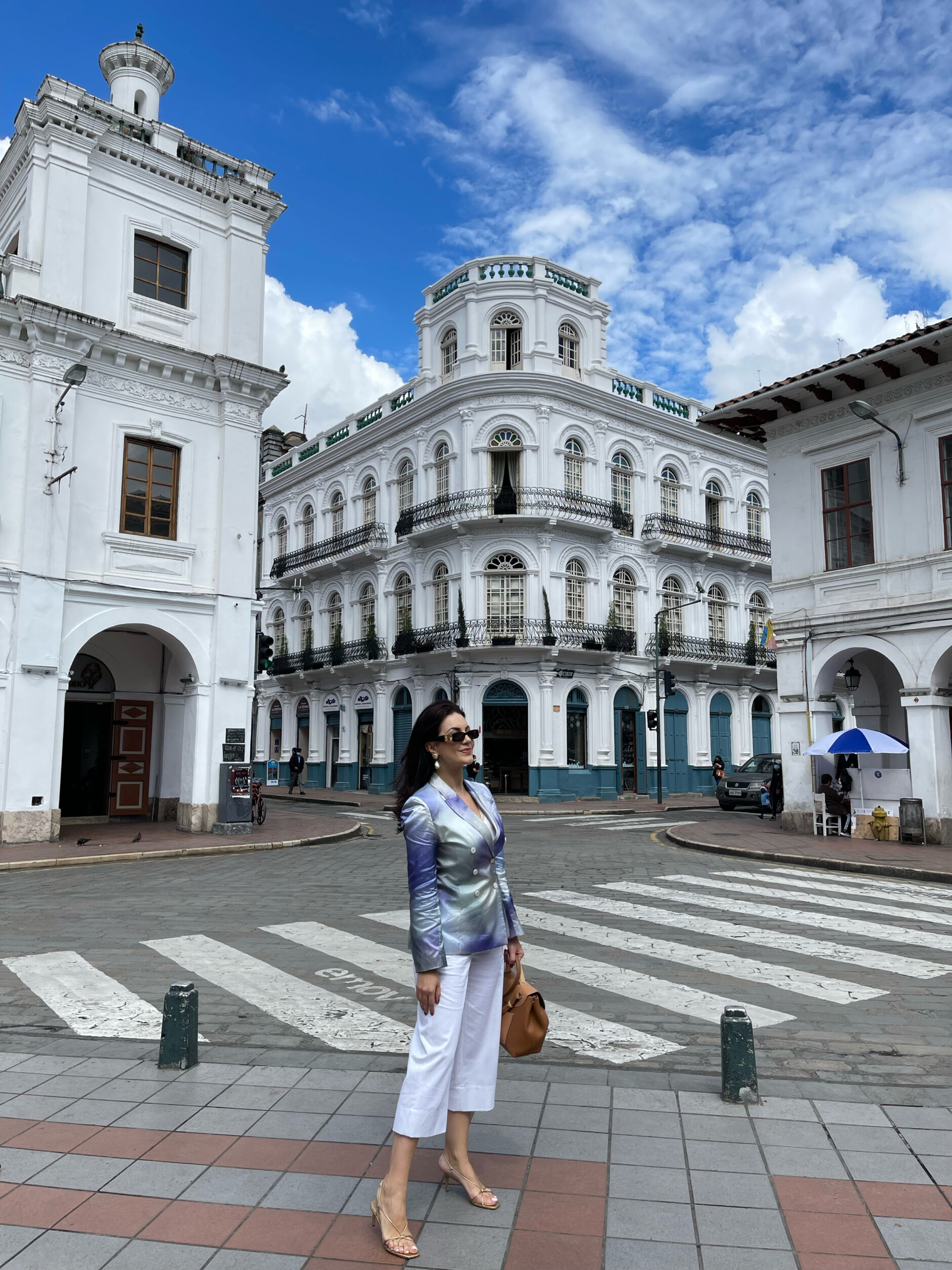
*NOTE: Unfortunately we are still in unusual times, and the COVID-19 regulations change rapidly. Please check here the latest information before making your journey to Ecuador.
Cuenca, is one of the most beautiful colonial cities in Ecuador, located in the highlands of Ecuador at about 2,560 m above sea level. This gem is surrounded by the Andes mountains, divided by the river Tomebamba next to the city center. Listed as a UNESCO World Heritage Site due to its many historical buildings and its historical importance as an agricultural and administrative center of Ecuador.
No wonder that Cuenca has a large expat community. These new citizens include more Europeans and North Americans, and a reduced but steady number of retirees. The city is noticeably cleaner, safer and more organized than the other cities in Ecuador. The historic center is very charming, with cobblestone streets and well-preserved historic buildings. It’s easy to spend an afternoon strolling through the streets and appreciating the beauty around this Spanish colonial city.
With this detailed Cuenca travel guide, I want to highlight the best things to do in my favorite city in Ecuador. I hope this guide helps you to plan out discoveries, explorations and to love the city as much as I do.


More about Cuenca
Cuenca is Ecuador’s third-largest city where the Cañari, the indigenous ethnic group lived. Eventually conquered by the Inca in the early 16th century shortly before the arrival of the Spanish in the mid-1500s. Cuenca and the province Azuay traces of civilization go way back to over 10,000 years ago.
The city’s full name is Santa Ana de los Cuatro Ríos de Cuenca. The translation of this lengthy city name references the four rivers that run through Cuenca. One of those rivers pleasantly divides the city, making it wonderful for a nice stroll, or any activities like picnic, jogging or biking along the river.
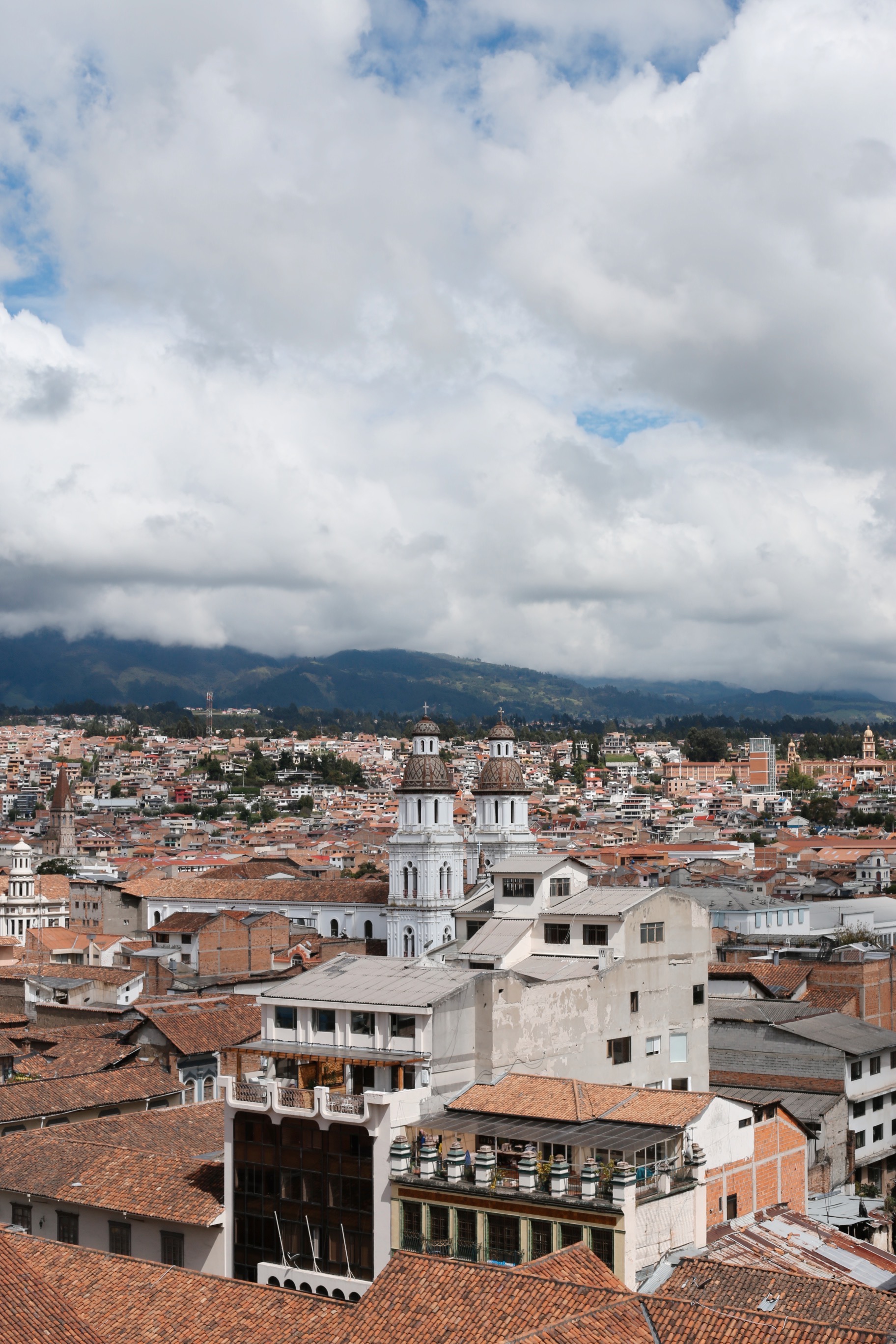
How safe is Cuenca?
Cuenca is quiet the safest city in Ecuador. It has a lovely and tranquil vibe, just like being somewhere in a Alpine city in Europe. Local people are very welcoming and friendly.


When is the best time to visit Cuenca?
Like the rest of the Ecuadorian Andes, Cuenca has a mild climate year-round. Days are generally warm and nights are cool enough that sweaters or jackets are usually desired. There are two seasons: rainy and dry. The best time to visit Cuenca is in the the dry season, between June and December. The rainy season, which is characterized by bright sunny mornings and afternoon showers, falls between January and May. The heaviest rains come in the invierno (wet season) of March, April and May.
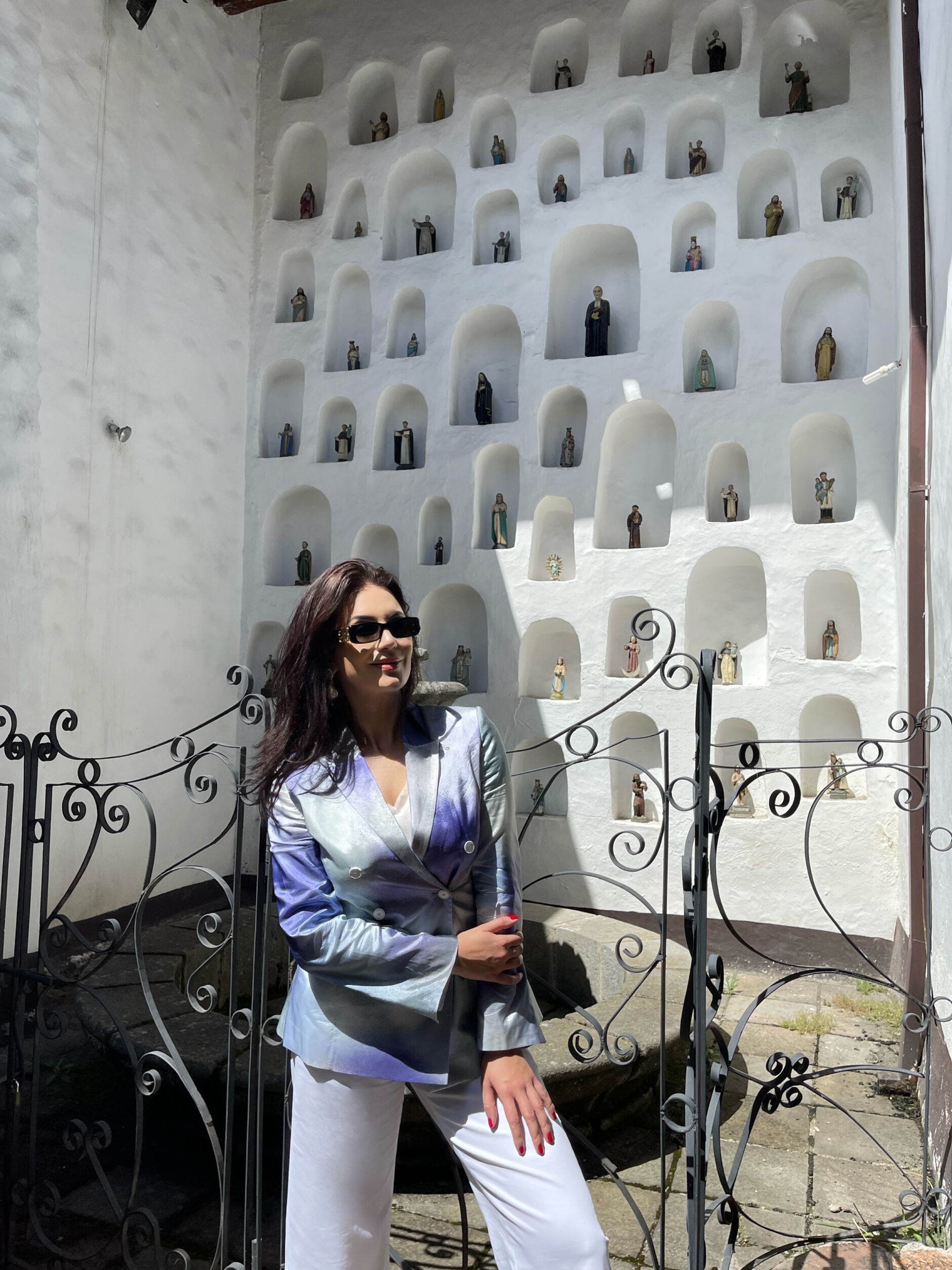
What to do in Cuenca?
There are so many beautiful things to do in and around Cuenca— but if you have little time to discover the city, even just strolling around Cuenca’s historic city center can be an unforgettable experience.
Here I want to share a list of things to do in Cuenca that I really loved:


Visit the Towers of Cuenca’s New Cathedral to have the best view over the city
Cuenca’s Cathedral de la Inmaculada is a centerpiece of the city that is commonly referred to as the New Cathedral. Although construction began in 1885, the cathedral was not completed until nearly a century later (1975). That’s why it’s referred to as the “new cathedral.” A combination of Romanesque Revival and Neo-Gothic in style, the church’s blue and white domes have become a symbol for the city, and symbolizes Cuenca’s skyline.
Its façade is made of alabaster and local marble, while the floor of the nave is covered with pink marble, brought from Carrara (Italy). At its inauguration, the newly constructed Cathedral could accommodate 9,000 out of Cuenca’s 10,000 inhabitants at that time.
The New Cathedral is among some of the largest churches in South America. The massive interior is said to be able to fit over 9,000 church-goers.
The best part of this Cathedral is that you can climb up the towers. There’s a small ticket booth just as you enter the cathedral’s northern (right-side) entrance that grants access to a narrow spiral staircase. It takes some steps to reach the top, but the effort is worth it when you see the fantastic views of Cuenca’s historic center.
NOTE: To visit the Cathedral is free, but there is $2 admission to climb the towers.
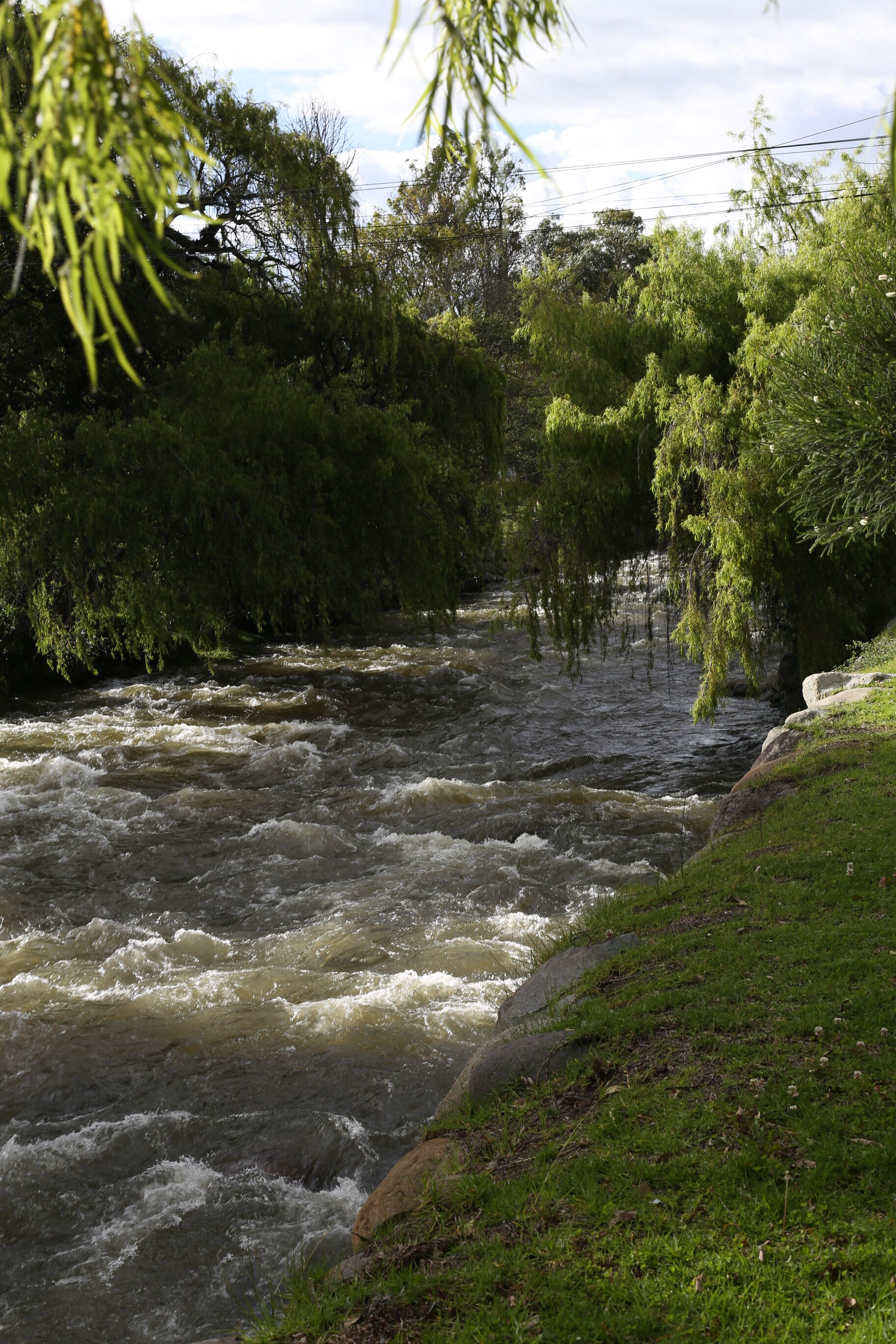
Stroll or Bike Along Cuenca’s Rio Tomebamba Riverfront
The Rio Tomebamba Riverfront reminded me my birthplace Prizren, in Kosovo. This area is a scenic stretch of the Tomebamba River that gives an instant tranquility. The river originates up in the mountains of Cajas National Park and flows onward down into the Amazon. On its way down the Andes, the river slices right through the middle of Cuenca.
The perfect green and clean riverbank is lined with trees that offer shade on sunny days. There are a few cafes and restaurants with views along this section of the Tomebamba River, so grab a coffee or a snack and walk along the river.
Have a larger view over Cuena from the Turi Viewpoint
The Mirador de Turi is a lookout point located high above the city, with breathtaking views. You can see many important monuments and buildings from the Turi Viewpoint. Best time to visit during daylight hours.
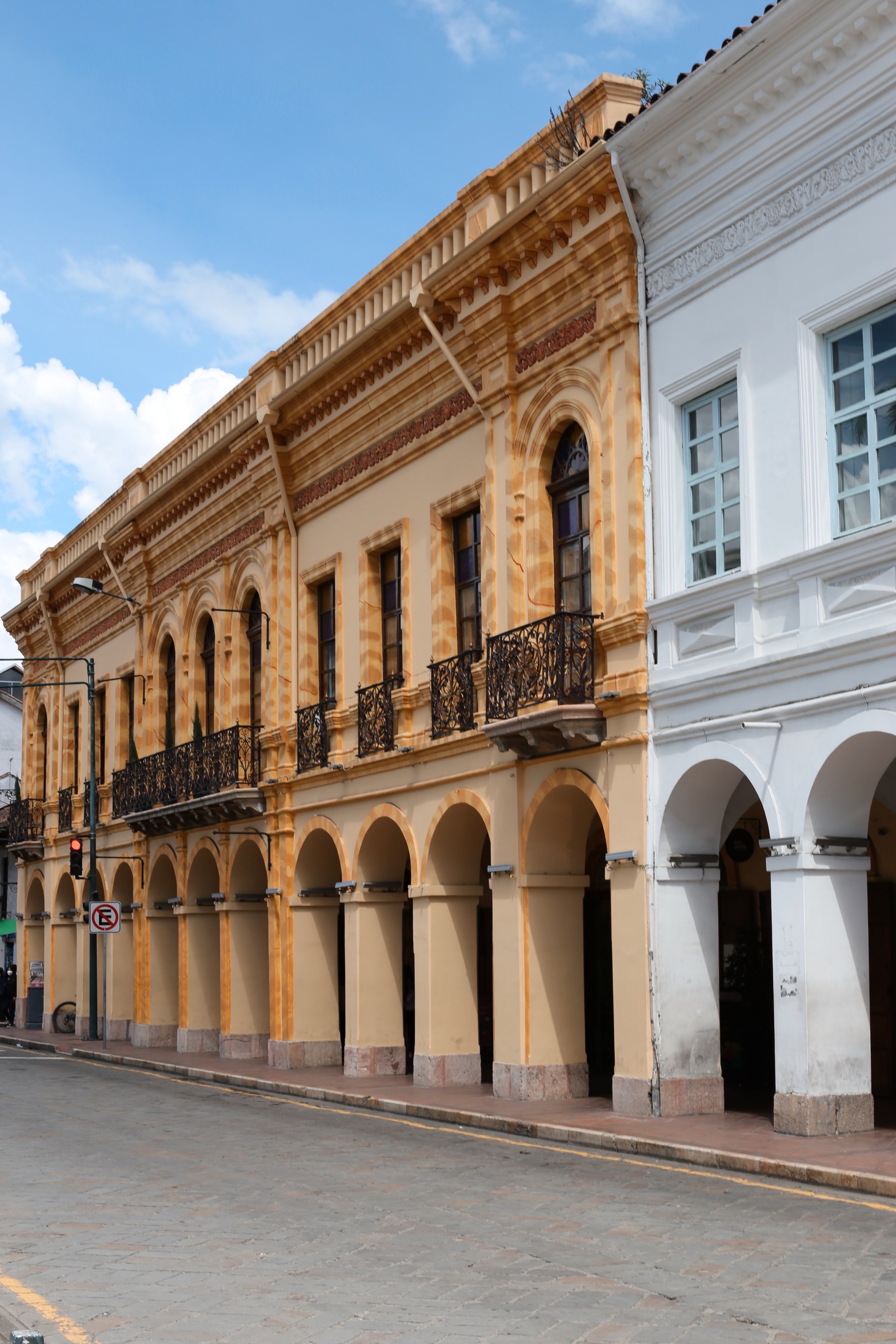
Discover Cuenca’s History Through Its Museums
There are few museums in Cuenca, and many of them focus on Ecuador’s history and Cuenca’s in particular. It is worth taking time to learn more about the culture and history of the country you’re visiting. In the process, you will also learn and see many interesting works of Ecuadoran artists.
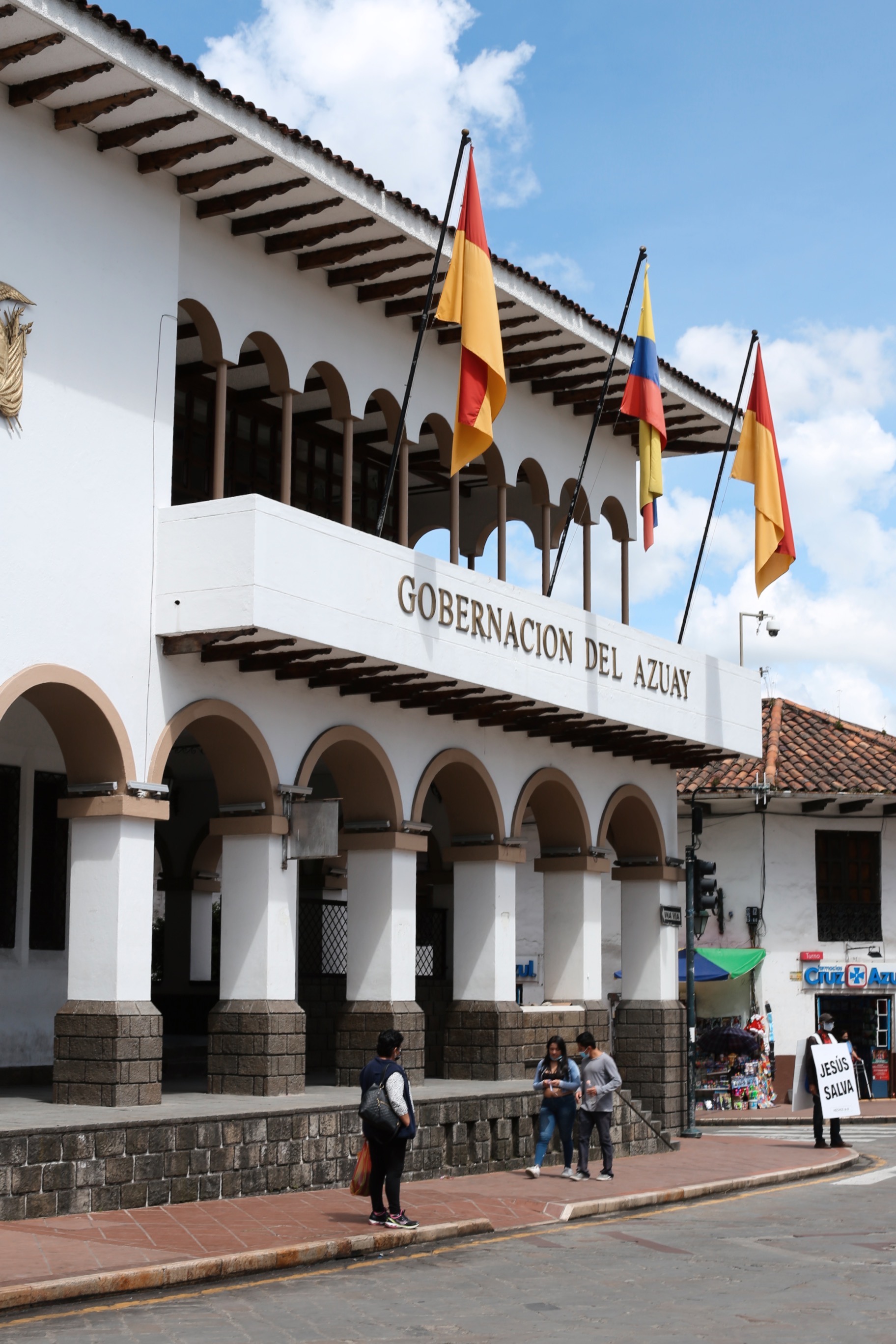
These are my favorite museums:
Pumapungo Museum
If you are interested about the indigenous culture, it’s great to start from Pumapungo Museum. A wonderful and the largest museum to begin a foray into Cuenca’s past. The first floor contains modern art exhibits in addition to some ancient artifacts. However, the second floor is where you find the Ecuador’s indigenous culture and history.
NOTE: this museum is free, and open from Tuesday to Friday between 8:00-5:30 PM. Open on weekends between 10:00-4:00 PM, but closed on Mondays.
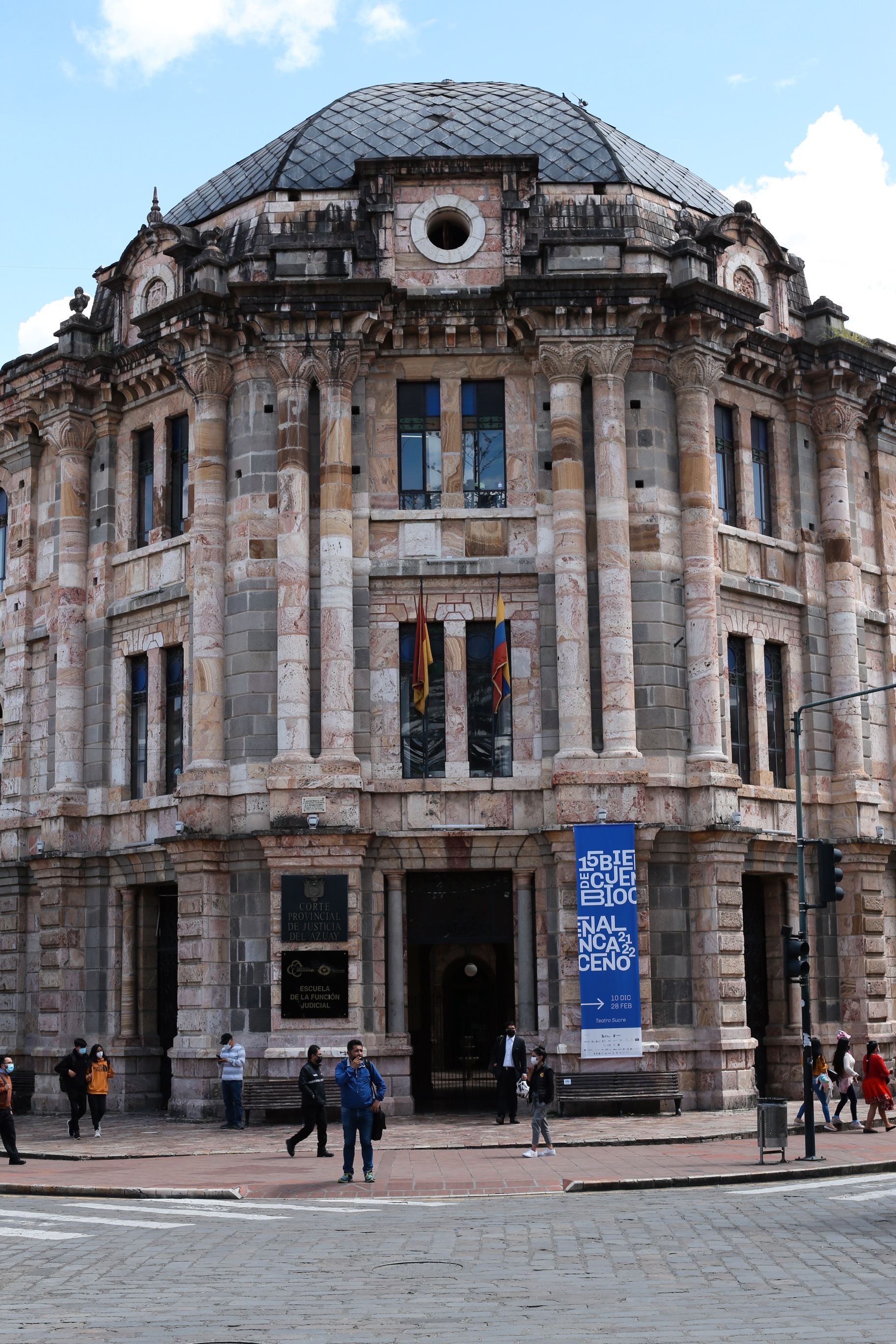
CURRENTLY HAPPENING— Cuenca Biennial of the Biocene: Change the Green to Blue
The Municipal Foundation of the Cuenca Biennial, directed by artist and curator Katya Cazar, inaugurated the presidential event of its 15th edition on 10th December 2021. The current Cuenca Biennial presents for the first time an exhibition project that seeks a change in the model, committing to a more sustainable edition through the curatorial thesis “Biennial of the Biocene: Change the Green to Blue” by Spanish curator Blanca De La Torre.
Her concept is a powerful approach that tackles issues linked to the climate and eco-social crisis, and it is based on the use of water and air to leave behind practices of false commitment, known as ‘greenwashing’. The curatorship unfolds around three main axes: Ancestral Knowledge, Eco Feminisms and Futurible Scenarios.
15th Cuenca Biennial ends on 28 February 2022.
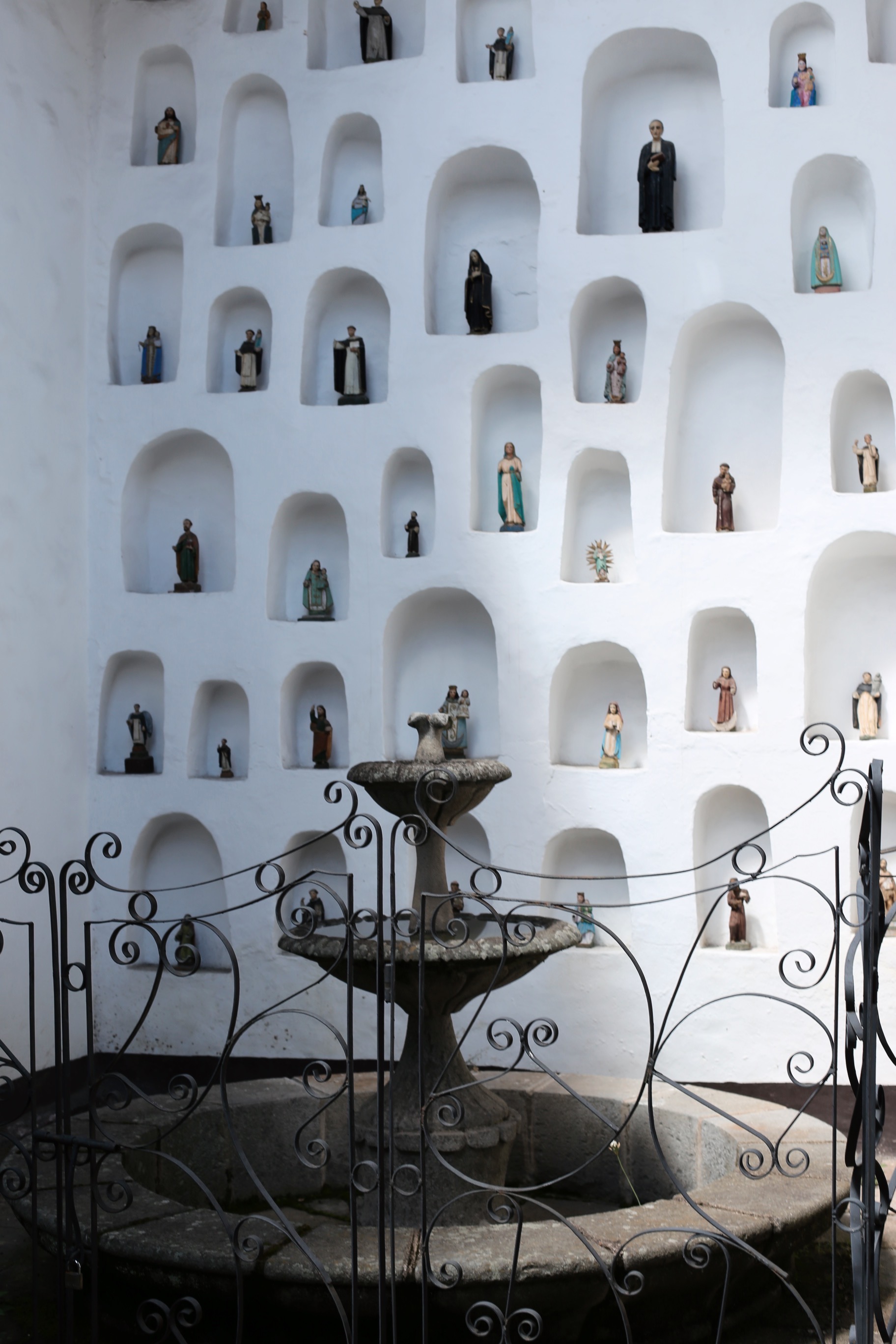
Museo Municipal de Arte Moderno
The Municipal Museum of Modern Art is located in the old House of Temperance that stands at the intersection of Mariscal Sucre and Coronel Tálbot streets in the San Sebastián parish of the Cuenca canton, province of Azuay.
The house where the Municipal Museum of Modern Art works belongs to the old regional architecture of the institutional type. In 1876, Bishop Miguel León founded the “House of Temperance” to treat the city’s chronic drunkards. Only after two years was a small house next to the Plaza de San Sebastián acquired from the priest Martín Aguirre, so that this laudable social service could be provided there.
The Museum of Modern Art institutes and organizes the International Painting Biennial, a contest that over time consolidates its presence at a continental level. In the same way, he created the “National Sculpture Hall” and the “Masters Hall”
At the moment its artistic funds amount to 310 paintings of great aesthetic quality, 25 sculptures, 23 pictorial works that correspond to the prizes of the different editions of the Biennial of Painting and 60 children’s works.
These achievements make the Museum of Modern Art a Center of recognized prestige in the dissemination and promotion of Contemporary Art.
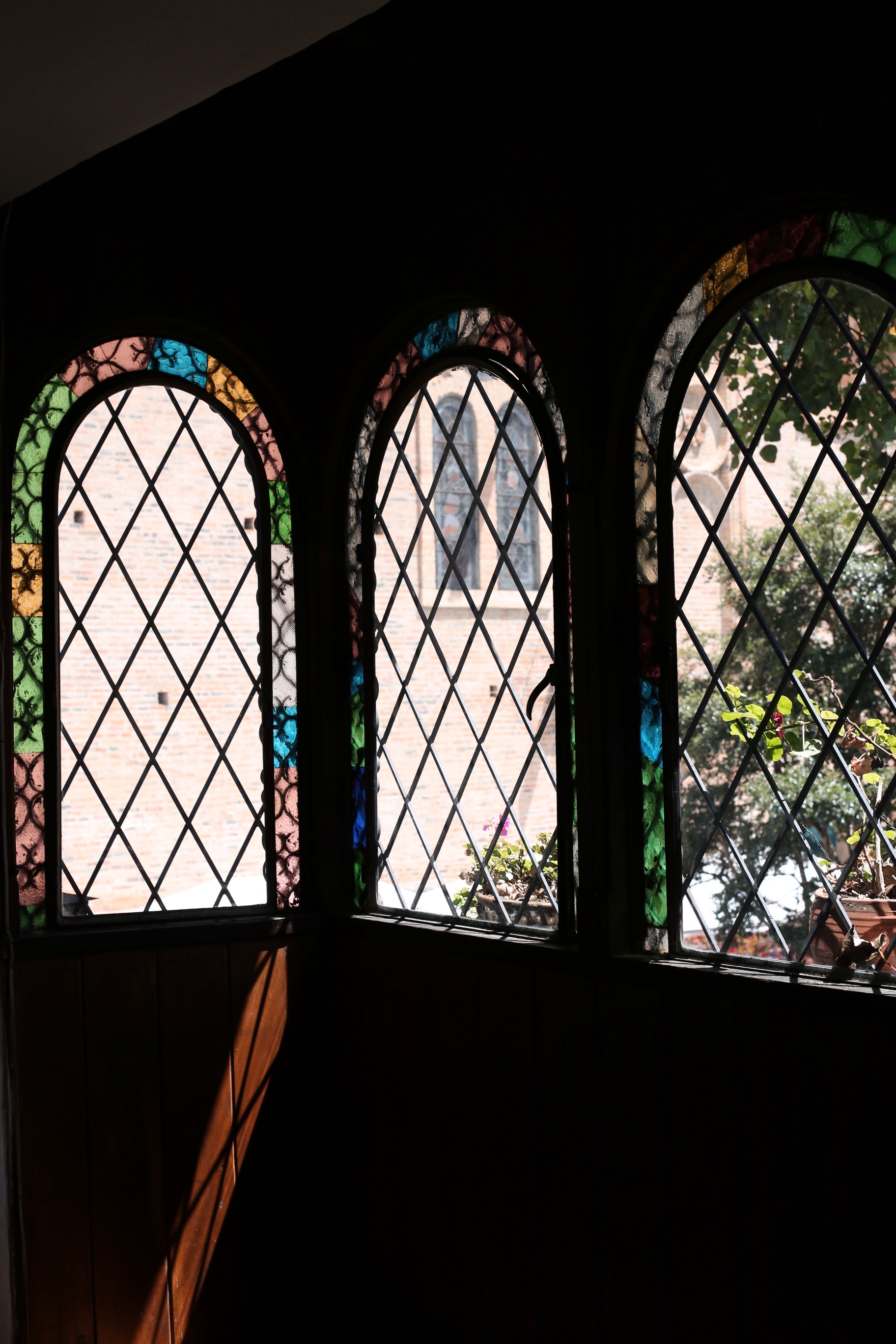
Salón del Pueblo
The Salón del Pueblo of Efraín Jara Idrovo is a welcoming space that has provided its service to the community for cultural events and local and international art exhibitions for more than 30 years.
In the 1970s, the Carmelites of Cuenca sold a part of their monastery to the Casa de la Cultura Núcleo del Azuay. The Salón del Pueblo of Efraín Jara Idrovo is a welcoming space that has provided its service to the community for cultural events and local and international art exhibitions for more than 30 years.
In the 1970s, the Carmelites of Cuenca sold a part of their monastery to the Casa de la Cultura Núcleo del Azuay, which installed the offices of the presidency of the institution there until 2005. Since then, the Salón del Pueblo has been available to the artists.
Its first floor, intended for rotating pictorial exhibitions, has two rooms, each of approximately 80m2 and capacity for 120 people. On the second floor there are two sacred art rooms where works owned by the CCENA are permanently exhibited. These rooms have also been used for small samples. It also has a sculpture room with an area of 81m2 and capacity for 90 people.
An olive tree (Olea Europaea) over 300 years old stands out in its garden, which, along with other goods, has been a heritage element of the Azuaya capital, Cultural Heritage of Humanity since 1999. It has a pictorial fund with six art collections: Pinacoteca with 204 works; Religious Works with 20; Oscar Schwarz with 30; Palm of the hand with 44; Personalities with 38, and several with 31. All this reserve is available for research and exhibitions.
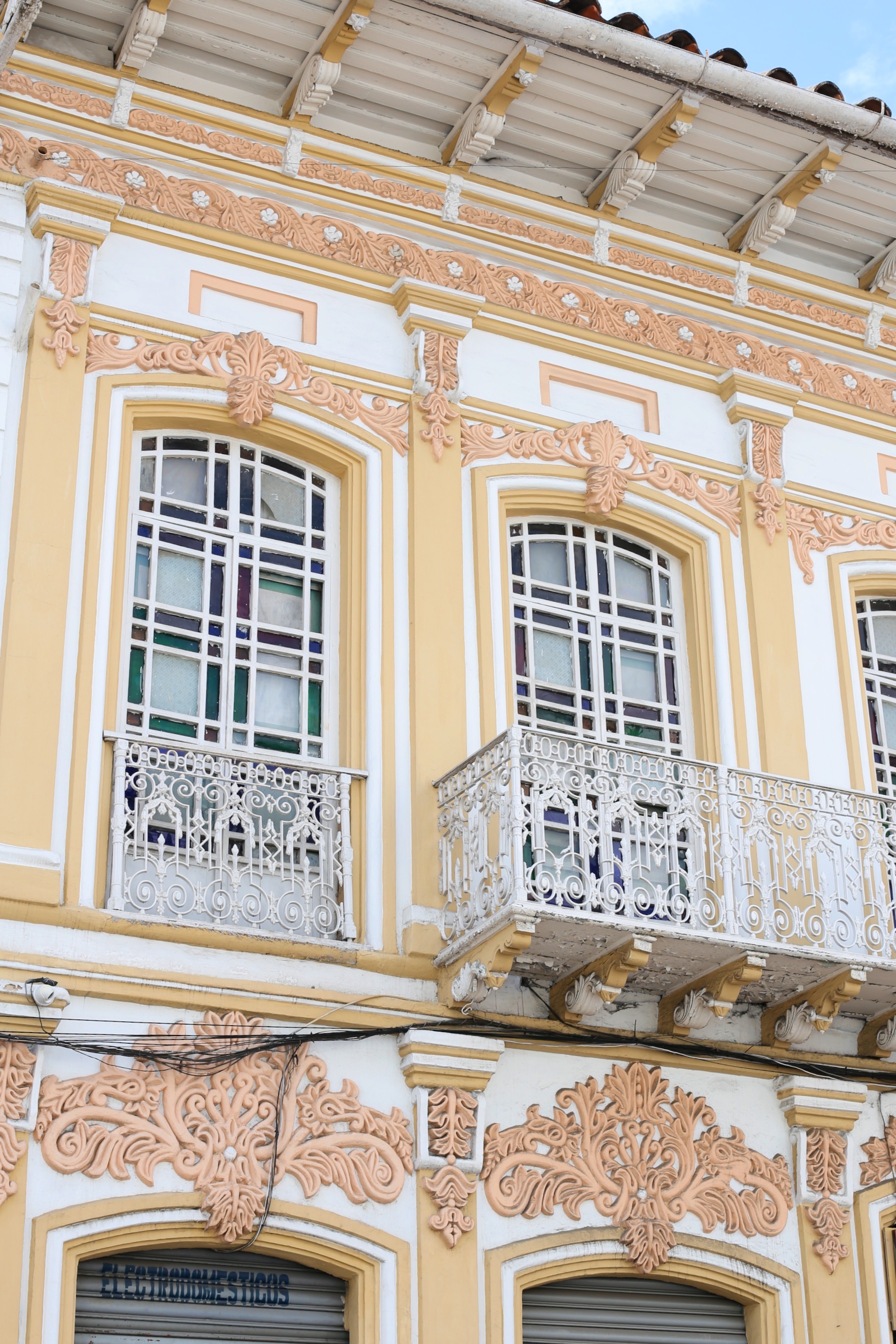
Museo Remigio Crespo
This museum was once home to Remigio Crespo Toral, a poet and collector who lived in Cuenca. The upper floors are mostly preserved in a colonial style and there is a section on the lower floors dedicated to his collection of pre-Hispanic artifacts.
The museum has balconies and a cafe overlooking the Rio Tomebamba. Entrance is free, but visiting hours are limited on the weekends. The museum is just over the road from the popular Goza Espresso Bar.
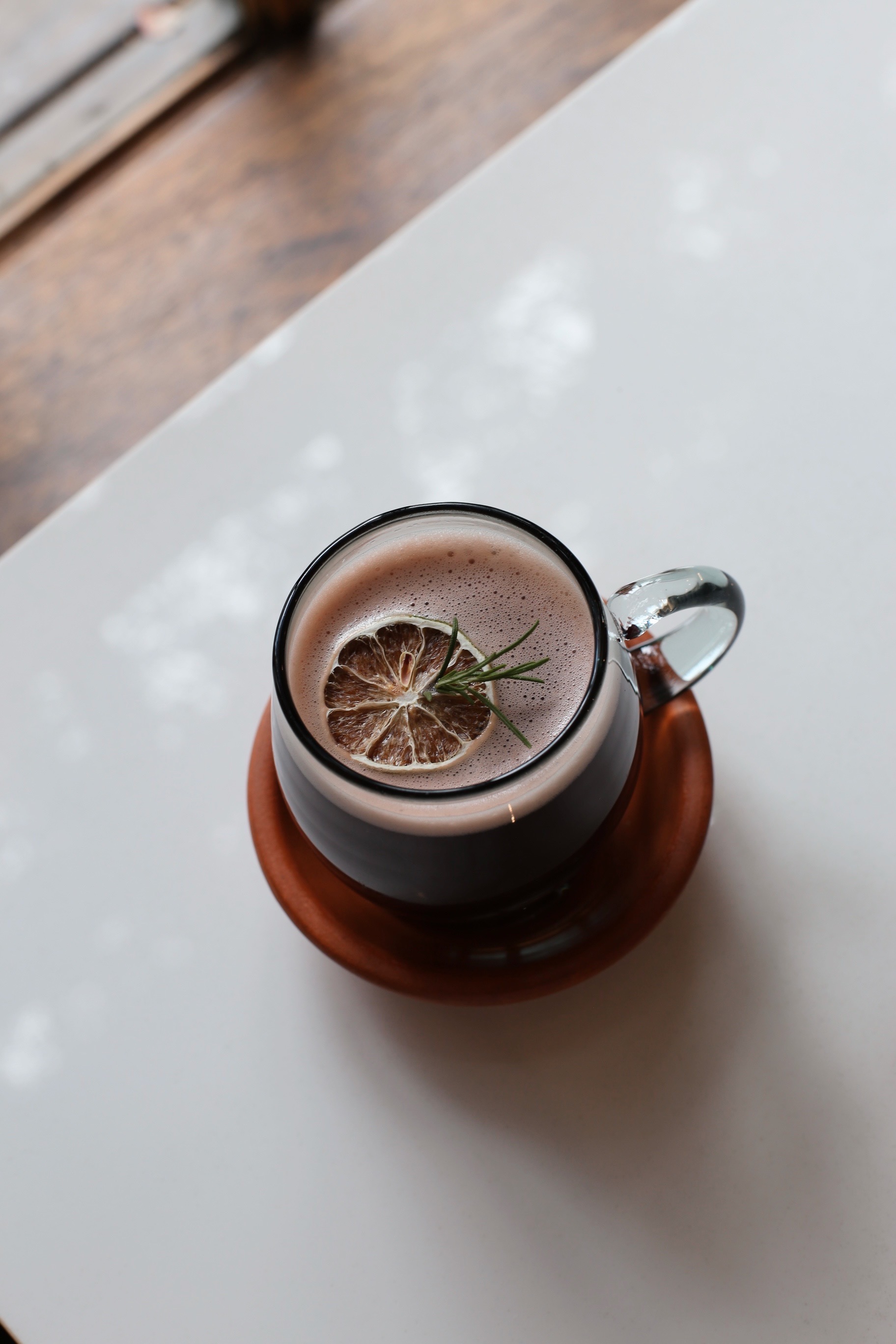
Where to eat and drink in Cuenca?
I fell in love with the Ecuadorian cuisine from day one when I arrived in Quito. So I was very excited to have a new culinary experience in Cuenca and discover new dishes from Ecuador’s highlands. Thanks to my friend Ade, and the recommendations of her foodie friends—I have the best locations to share, where to eat and drink in Cuenca. So here are my favorite places:











DOS SUCRES
It’s a must when you visit Cuenca. An excellent restaurant in a beautiful house with a great team that provides a high feel-good factor. The chef and owner interprets traditional Ecuadorian cuisine with a modern twist.
The food is exceptionally delicious and all ingredients are carefully selected as well as each dish has a story to tell. This is definitely a world class restaurant where every detail is well thought out. The service was very pleasant and professional.
Visit their Instagram for more info and reservation


LA MARIA
This restaurant offers organic cuisine that takes you to the Ecuadorian flavors of traditional food. LAMARIA is characterized by its tradition, warmth, making guests feel at home. The chef offers exquisite, but also a wide variety of flavors. Very satisfied portions, great unique flavors, perfectly cooked dishes, a great location in the historic center of Cuenca, definitely worth visiting for lunch and dinner.
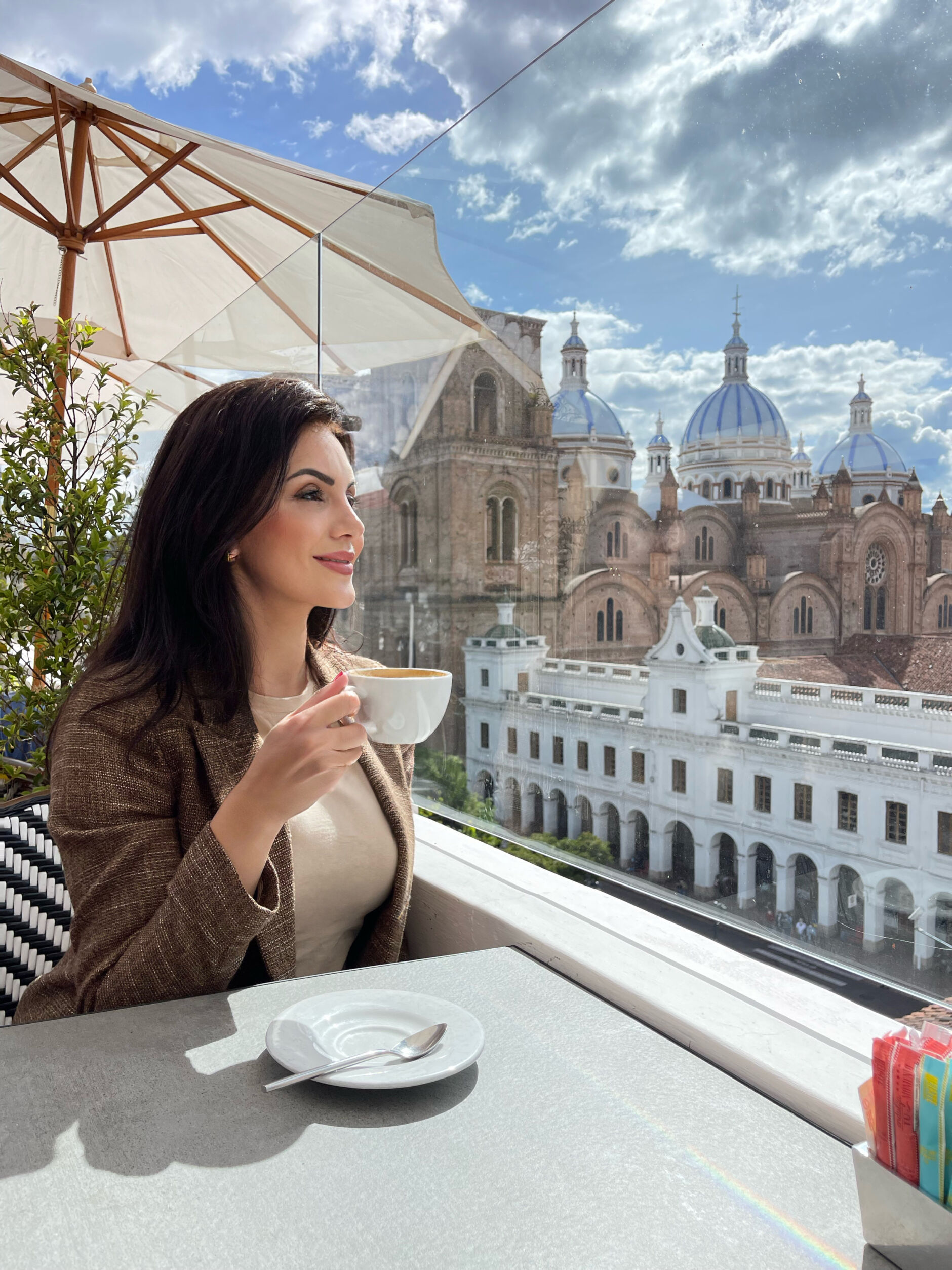
NEGRONI Rooftop
Probably the best rooftop bar at the moment, with a epic view over the Cuenca’s New Cathedral. I would suggest this place only for sunset drinks or coffee and cake during the day.
Mansión Matilde
This wonderful restaurant was once a private home and it still feels like that. However, now it offers small dining rooms— and some with a beautiful view out over Parque Calderon. I cannot recommend this restaurant for food, but rather for an afternoon tea or cocktails, as well as desserts.
Consuelo Restaurante
This restaurant looks like an antique shop with a lot of traditional decoration pieces. They offer traditional Cuencan food and cocktails. Definitely worth visiting.
MADAME
Madame is located at my favourite building in Cuenca. The second floor has a mixed construction from the end of the 19th century, which stands for a French-style mansion. A very pretty location for dinner and drinks.
SERAFINA
Is a hidden gem in the Huayna-Capac neighborhood. Beautifully presented delicious food and great drinks. Perfect for lunch and dinner.



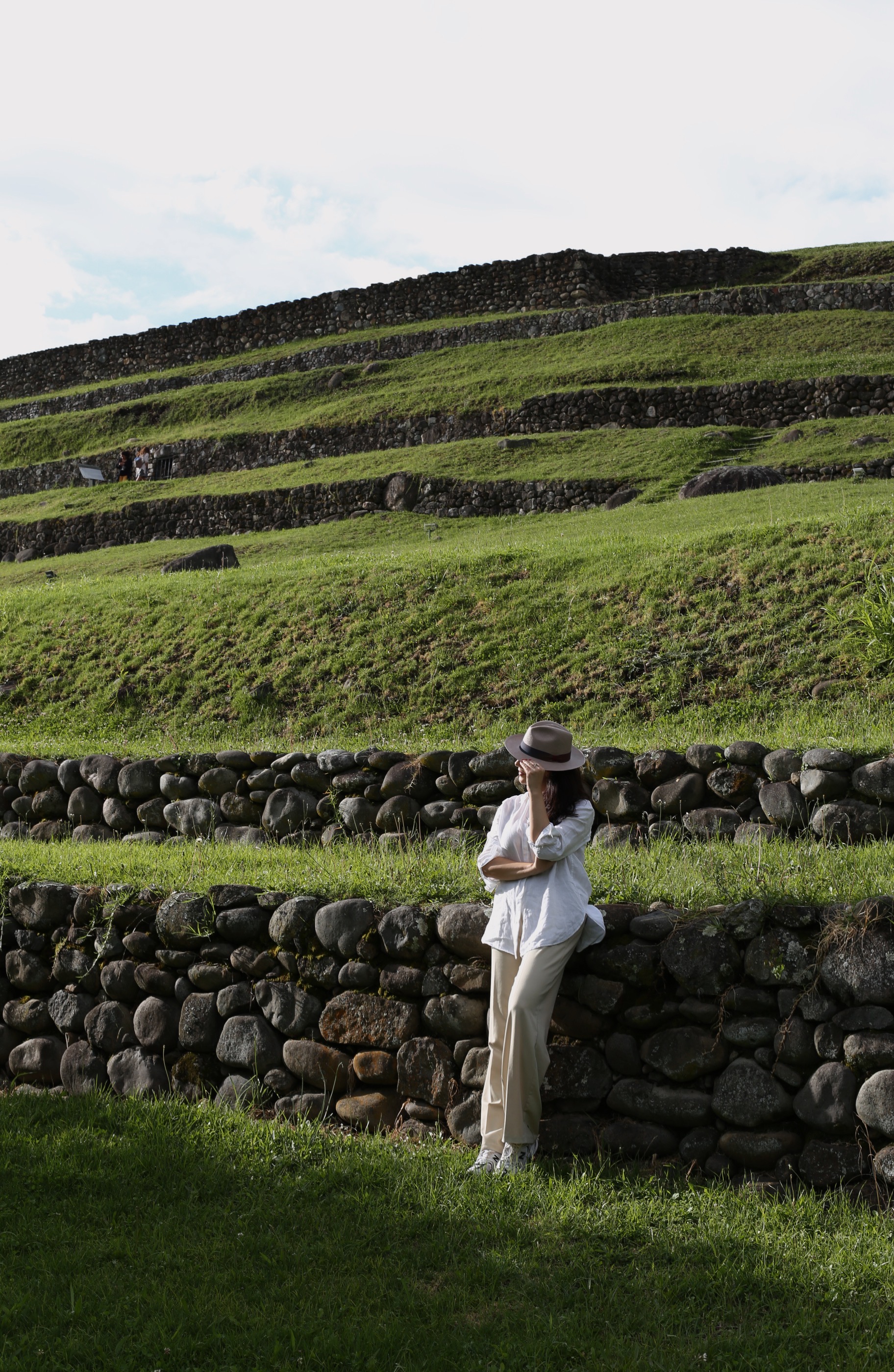
Explore Cuenca’s Inca Ruins at Pumapungo Archeological Park
In the heart of the historic center, in the back of the Pumapungo Museum, there are doors to the outside that lead to what is left of an ancient ruin site known as Parque Arqueologico del Pumapungo. The ruins found here are believed to be a part of the ancient city of Tomebamba that was first inhabited by the Cañari people before the Incas overtook it for use as a fort. Must visit!
ADDITIONAL TIPS: You can also add the mineral water of Baños on your list, if you are looking for a spa day outside of the city. As well as driving 2 and a half hours to visit Ecuador’s largest Inca ruins, Ingapirca.
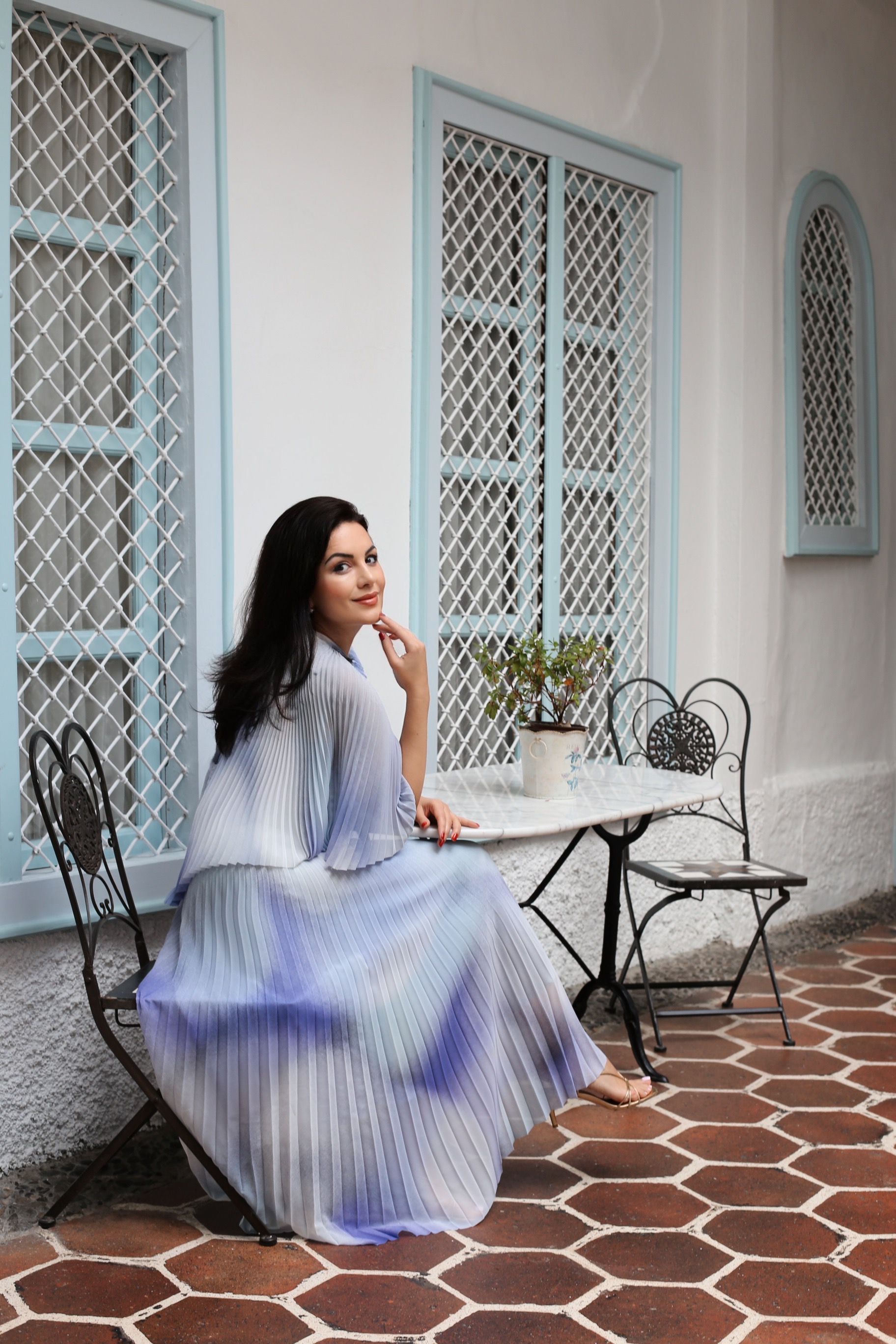
Where to stay in Cuenca?
- Mansion Alcazar
- Hotel Boutique Santa Lucia
- Hotel Inca Real
- Selina Cuenca
- Morenica del Rosario
- Hotel La Orquidea
Where to shop in Cuenca?
When in Cuenca, you have to buy at least one Panama hat. Well Ecuador, not Panama, is the origin and production center to what is well-known around the world as the “Panama Hat.”
The reason for this confusing name is because these Ecuadorian hats were being exported to Panama while the Panama Canal was being built in the early 1900s. Then US President Roosevelt visited the construction site and was photographed wearing the hat in Panama. Hence the name “Panama Hat” has stuck ever since. I bought two hats at Paja Toquilla Hats, one ‘Panama’ and a winter fedora– my absolute favorite souvenirs from Cuenca.
For unique Ecuadorian souvenirs, gifts, ponchos- visit the Mercado Atesanal and Plaza de San Francisco. I found my perfect poncho for $20. Definitely worth buying all souvenir gifts there, as the prices are half cheaper than buying the souvenirs at the airport.
Save This Post For Later On Pinterest:
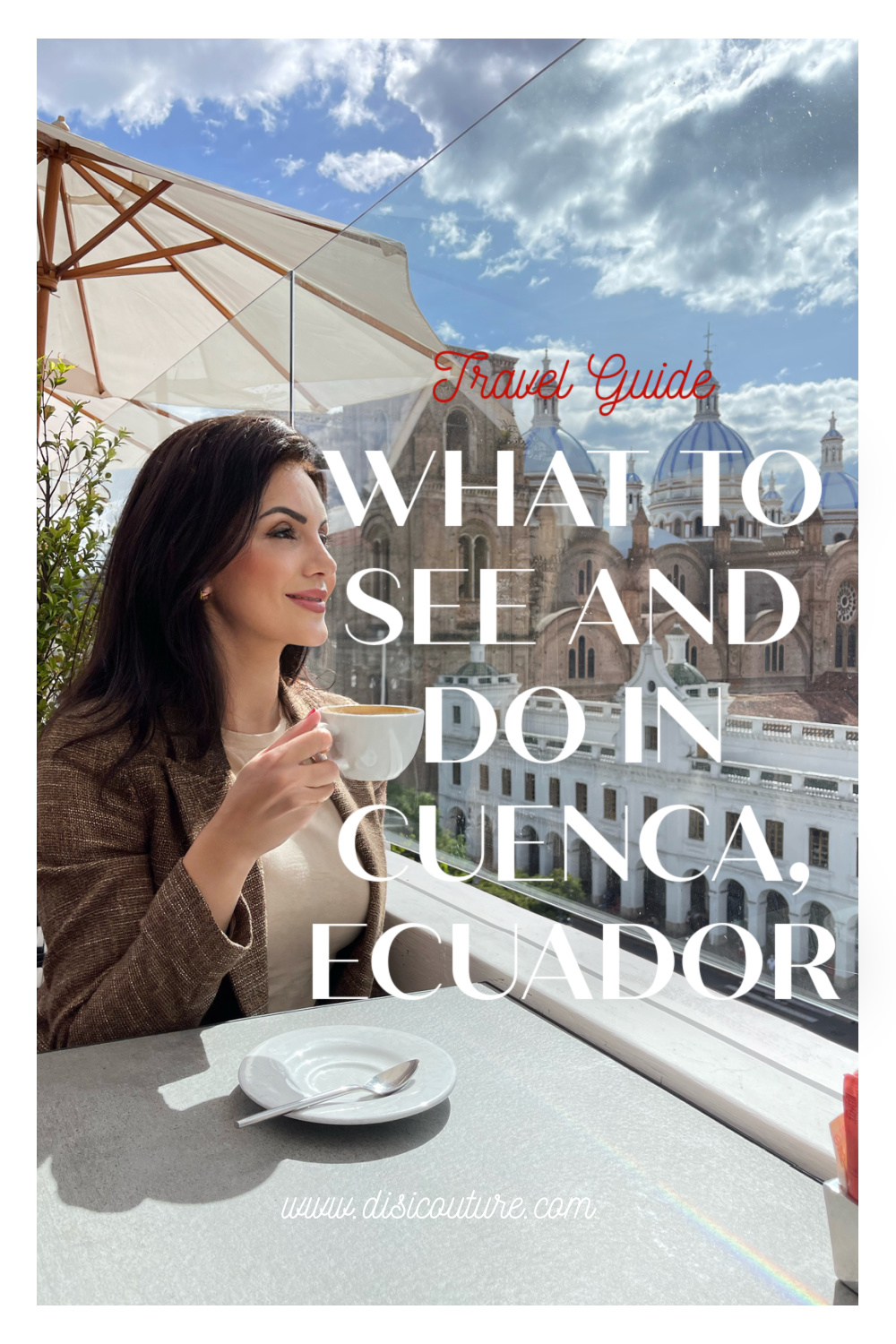
All photos (c) DisiCouture
*This post is 100% not sponsored
